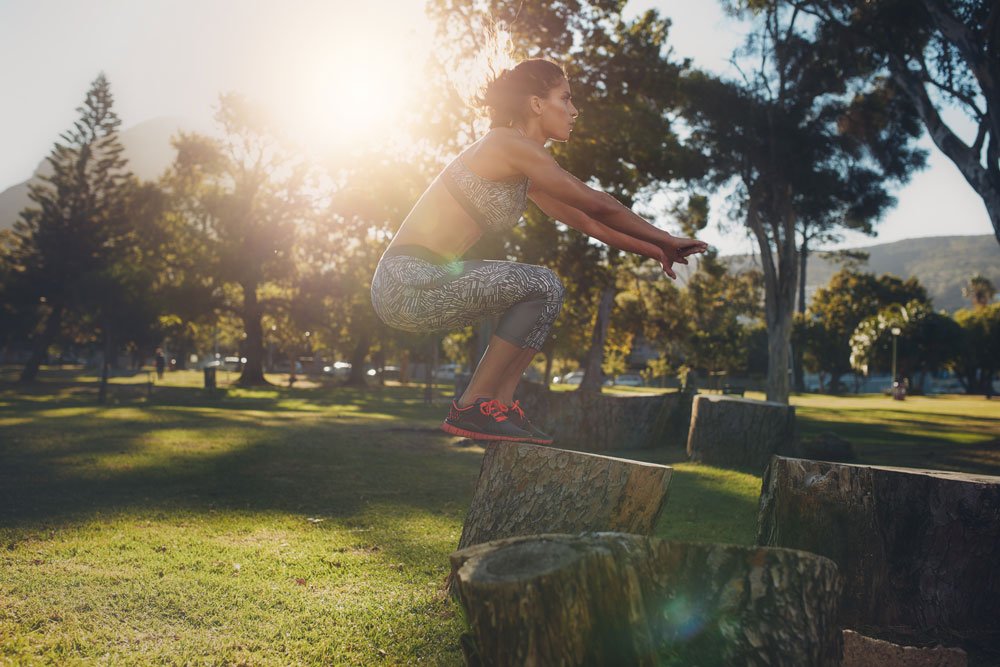Back
Athletes and Pelvic Health: Breaking the Silence on Leakage and the Role of Pelvic Floor Therapy
By Dr. Christine Martirez PT, DPT on 2/26/2024

The world of sports and athleticism is often associated with strength, endurance, and peak physical performance. However, an aspect that remains in the shadows for many athletes is the health of their pelvic floor. Pelvic floor issues, including leakage, can affect athletes of all levels and disciplines. In this blog post, we'll explore the relationship between athletes and pelvic health, uncover potential causes of leakage, identify risk factors, and discuss how pelvic floor therapy can be a game-changer.

The Athletic Pelvic Floor: Beyond the Surface
Pelvic Floor Function in Athletes:
The pelvic floor is a group of muscles, ligaments, and connective tissues that support the pelvic organs and contribute to various bodily functions, including bladder control. Athletes, just like the general population, rely on these muscles for stability, posture, and efficient movement.Common Pelvic Floor Challenges:
Athletes may experience specific challenges related to the pelvic floor, such as increased intra-abdominal pressure during high-impact activities, muscle imbalances, and pelvic floor dysfunction.

Leakage in Athletes: Causes and Risk Factors
High-Impact Activities:
Sports that involve repetitive high-impact movements, such as running, jumping, or weightlifting, can lead to increased stress on the pelvic floor. This can contribute to leakage, especially in situations where the pelvic floor muscles are weakened.Muscle Imbalances:
Athletes may develop muscle imbalances due to specific training regimens, leading to weakness or tightness in the pelvic floor muscles. Imbalances can impact bladder control and contribute to leakage.Overtraining and Fatigue:
Intense training schedules and inadequate recovery time can contribute to overall fatigue, affecting the pelvic floor's ability to provide adequate support and control.Previous Injuries:
Past injuries, especially those involving the pelvic region or lower back, may increase the likelihood of pelvic floor issues in athletes.Pressure from Equipment:
Some sports involve the use of equipment that puts additional pressure on the pelvic floor, potentially contributing to leakage. Examples include certain types of cycling saddles or weightlifting belts.
Empowering Athletes with Pelvic Floor Therapy
Specialized Assessment:
Pelvic floor physical therapists conduct specialized assessments to evaluate muscle tone, strength, and coordination in athletes. This individualized approach helps identify specific factors contributing to leakage.Targeted Exercises:
Pelvic floor therapy involves tailored exercises to address muscle imbalances and weaknesses. Strengthening the pelvic floor muscles can enhance their ability to provide support during physical activities.Biofeedback Techniques:
Biofeedback is a valuable tool in pelvic floor therapy, providing real-time feedback on muscle activity. Athletes can learn to control and coordinate their pelvic floor muscles more effectively, improving bladder control.Educational Support:
Pelvic floor therapists offer education on lifestyle modifications, hydration, and the importance of regular rest and recovery. Athletes are empowered with knowledge to integrate pelvic health into their overall training regimen.
Breaking the Stigma: Athletes and Pelvic Health
Open Conversations:
Athletes are encouraged to engage in open conversations about pelvic health. Breaking the silence surrounding leakage helps destigmatize the issue and encourages proactive management.Holistic Approach to Training:
Integrating pelvic floor health into an athlete's training routine promotes a holistic approach to overall well-being. Addressing pelvic health contributes to improved performance and injury prevention.
Striving for Optimal Performance, Inside and Out
For athletes, achieving peak performance involves addressing every facet of physical health, including the often-overlooked realm of pelvic health. Leakage is a common concern that should not be dismissed or hidden. Through targeted pelvic floor therapy, athletes can build a strong foundation, enhance their performance, and break free from the constraints of pelvic floor challenges. By embracing open conversations, seeking professional support, and incorporating pelvic floor health into training regimens, athletes can stride confidently towards optimal performance, both on the field and in their overall well-being.
Read More:
Dry Needling for C-Section Scars and Postpartum Recovery By Dr. Christine Martirez PT, DPT on 10/15/2024 Learn how dry needling can be used for c-section scars and c-section recovery How Red Light Therapy Can Be Used to Treat Pelvic Floor Dysfunctions By Dr. Christine Martirez PT, DPT on 10/15/2024 Learn about red light therapy and how it can be used to treat pelvic floor dysfunctions
Are you ready to live pain free?
Request An Appointment